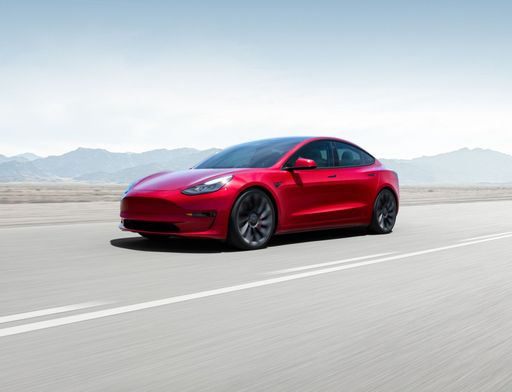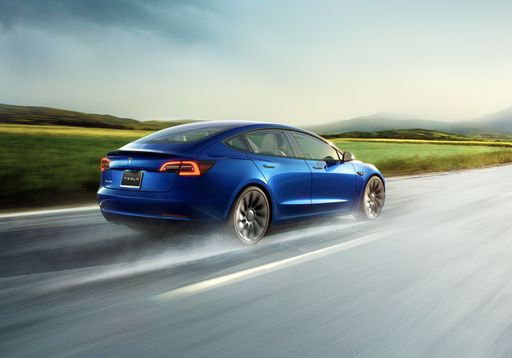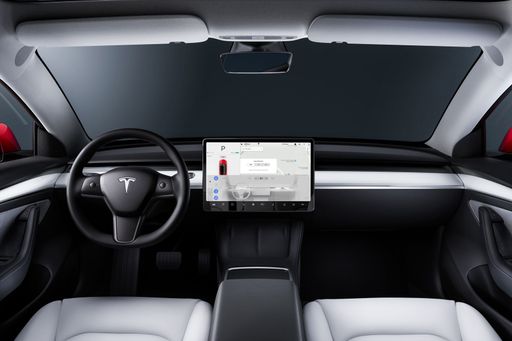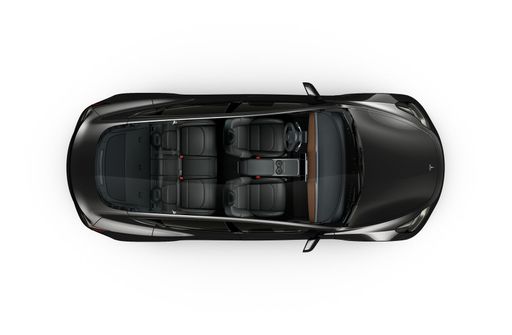Mercedes Citan vs Tesla Model 3 – Differences & prices compared
Compare performance, boot space, consumption and price in one view.
Find out now: which car is the better choice for you – Mercedes Citan or Tesla Model 3?
The Mercedes Citan (High Roof Estate) comes with a Petrol, Diesel or Electric engine and Manuel or Automatic transmission. In comparison, the Tesla Model 3 (Hatchback) features a Electric engine with Automatic transmission.
When it comes to boot capacity, the Mercedes Citan offers 551 L, while the Tesla Model 3 provides 594 L – depending on how much space you need. If you’re looking for more power, decide whether the 131 HP of the Mercedes Citan or the 627 HP of the Tesla Model 3 suits your needs better.
In terms of consumption, the values are 19.30 kWh5.30 L per 100 km for the Mercedes Citan, and 13.20 kWh for the Tesla Model 3.
Price-wise, the Mercedes Citan starts at 21900 £, while the Tesla Model 3 is available from 34300 £. Compare all the details and find out which model fits your lifestyle best!
Mercedes Citan
The Mercedes-Benz Citan High Roof Van is a versatile option in the compact van segment, offering a perfect blend of practicality and style. Its sleek design combined with the brand's hallmark attention to detail ensures that it stands out on city streets and motorways alike. Inside, the spacious cabin provides ample room for passengers or cargo, making it an ideal choice for both urban professionals and families seeking flexibility.
detailsTesla Model 3
The Tesla Model 3 stands out in the electric vehicle market with its sleek design and impressive performance capabilities. It offers a seamless driving experience that combines advanced technology with minimalistic interiors, creating a futuristic feel on the road. Additionally, its range and charging infrastructure make it a practical choice for both city commuting and longer journeys.
details @ tesla.com
@ tesla.com
 @ tesla.com
@ tesla.com
 @ tesla.com
@ tesla.com
 @ tesla.com
@ tesla.com

|
|
|
|
|
Costs and Consumption |
|
|---|---|
|
Price
21900 - 32400 £
|
Price
34300 - 50100 £
|
|
Consumption L/100km
5.3 - 7.1 L
|
Consumption L/100km
-
|
|
Consumption kWh/100km
19.3 - 20.7 kWh
|
Consumption kWh/100km
13.2 - 16.7 kWh
|
|
Electric Range
265 - 280 km
|
Electric Range
513 - 702 km
|
|
Battery Capacity
45 kWh
|
Battery Capacity
62 - 79 kWh
|
|
co2
0 - 160 g/km
|
co2
0 g/km
|
|
Fuel tank capacity
54 L
|
Fuel tank capacity
-
|
Dimensions and Body |
|
|---|---|
|
Body Type
High Roof Estate
|
Body Type
Hatchback
|
|
Seats
5
|
Seats
5
|
|
Doors
5
|
Doors
5
|
|
Curb weight
1556 - 2010 kg
|
Curb weight
1822 - 1929 kg
|
|
Trunk capacity
0 - 551 L
|
Trunk capacity
594 L
|
|
Length
4498 - 4922 mm
|
Length
4720 - 4724 mm
|
|
Width
1859 mm
|
Width
1850 mm
|
|
Height
1811 - 1830 mm
|
Height
1431 - 1440 mm
|
|
Payload
485 - 644 kg
|
Payload
303 - 333 kg
|
Engine and Performance |
|
|---|---|
|
Engine Type
Petrol, Diesel, Electric
|
Engine Type
Electric
|
|
Transmission
Manuel, Automatic
|
Transmission
Automatic
|
|
Transmission Detail
Manual Gearbox, Dual-Clutch Automatic
|
Transmission Detail
-
|
|
Drive Type
Front-Wheel Drive
|
Drive Type
Rear-Wheel Drive, All-Wheel Drive
|
|
Power HP
95 - 131 HP
|
Power HP
283 - 627 HP
|
|
Acceleration 0-100km/h
13 - 15.5 s
|
Acceleration 0-100km/h
3.1 - 6.1 s
|
|
Max Speed
132 - 183 km/h
|
Max Speed
201 - 262 km/h
|
|
Torque
200 - 270 Nm
|
Torque
420 - 660 Nm
|
|
Number of Cylinders
4
|
Number of Cylinders
-
|
|
Power kW
70 - 96 kW
|
Power kW
208 - 461 kW
|
|
Engine capacity
1332 - 1461 cm3
|
Engine capacity
-
|
General |
|
|---|---|
|
Model Year
2021 - 2024
|
Model Year
2023 - 2024
|
|
CO2 Efficiency Class
F, E, A
|
CO2 Efficiency Class
A
|
|
Brand
Mercedes-Benz
|
Brand
Tesla
|
Mercedes Citan
Introducing the Mercedes-Benz Citan High Roof Van
The Mercedes-Benz Citan High Roof Van is the epitome of versatility and style among small commercial vehicles. Designed for modern urban mobility, it seamlessly blends practicality with innovation, making it an essential choice for those looking for capacity without compromising on quality.
Engine Variants and Performance
Mercedes-Benz offers a range of engine choices for the Citan High Roof Van, catering to varying needs. The powertrain options include efficient petrol, robust diesel, and cutting-edge electric versions, all integrated with front-wheel drive systems. With power outputs between 95 and 131 PS, these engines cater to both urban driving and long-haul needs.
For those focused on sustainability, the eCitan model provides a compelling electric alternative. The electric motor produces 122 PS and offers smooth acceleration with a range of up to 280 km on a single charge.
Advanced Technical Features
Within the Citan, technology plays a pivotal role in enhancing the driving experience. The cockpit is equipped with modern infotainment systems that support connectivity, bolstered by practical ergonomics to increase driver comfort. Additionally, the vehicle's suite of safety features, including advanced driver-assistance systems, exemplifies Mercedes-Benz's commitment to safety innovation.
Efficiency and Environmental Considerations
The Citan combines performance with eco-friendliness, offering fuel consumption figures from 5.3 to 7.1 L/100km for petrol and diesel variants. On the electric front, energy consumption is efficiently managed between 19.3 and 20.7 kWh/100 km, significantly reducing the carbon footprint compared to conventional engines.
Furthermore, with multiple engines boasting CO2 efficiency classes ranging from A to F, the Citan is designed to meet stringent environmental standards without sacrificing power or functionality.
Interior Space and Practicality
One of the most striking elements of the Citan High Roof Van is its sizeable interior, harmoniously designed to maximize passenger comfort and cargo space. With a luggage capacity of up to 551 litres, it is well-equipped for business applications and family adventures alike. The smart layout and five-seat configuration ensure the van is versatile enough to handle any task.
The Perfect Balance Between Functionality and Luxury
Mercedes-Benz has skilfully combined practicality with luxury in the Citan, offering trim levels from Base to Pro Automatik. These options provide varying degrees of sophistication and equipment, ensuring that the needs of each customer are effectively met, all backed by the brand’s renowned commitment to excellence.
Conclusion
The Mercedes-Benz Citan High Roof Van is a testament to how commercial vehicles have evolved, deftly merging utility with sophistication. Whether you are an urban delivery driver or a family seeking versatility, the Citan offers a compelling mix of practicality, efficiency, and luxury. Discover the model that suits your lifestyle and drive into a future crafted with confidence and reliability.
Tesla Model 3
Introduction to the Tesla Model 3
The Tesla Model 3 has quickly become a beacon of innovation in the world of electric vehicles (EVs), embodying a perfect blend of performance, technology, and sustainability. Known for redefining the electric car experience, the Model 3 stands as a testament to Tesla's commitment to pushing the boundaries of automotive design and engineering.
Design and Build
With its sleek fastback silhouette, the Tesla Model 3 is not only visually captivating but also aerodynamically efficient. Measuring at 4720 mm in length, 1850 mm in width, and 1441 mm in height, it optimally combines aesthetics with functionality. The Model 3 boasts a 594-litre boot space, offering ample room for everyday storage needs. Built with environmental efficiency in mind, its CO2 efficiency rating stands proudly at a perfect A, making it an ideal choice for the eco-conscious driver.
Powertrain and Performance
Under the bonnet, the Model 3 offers a diverse range of powertrains. It is available in both rear-wheel drive (RWD) and all-wheel drive (AWD) options, catering to different driving preferences. The electric motors deliver a remarkable power output ranging from 283 to 460 PS, translating to 208 to 338 kW. Depending on the variant, the Model 3 can accelerate from 0 to 100 km/h in a staggering 3.1 to 6.1 seconds. With a top speed between 201 and 262 km/h, the Model 3 promises an exhilarating driving experience.
Battery and Range
The Model 3 is equipped with a robust battery pack, available in capacities ranging from 62 to 79 kWh. This ensures an impressive electric range of 513 to 629 km on a single charge, catering perfectly to both city drivers and those who frequently embark on long-distance journeys. The energy consumption is between 13.2 to 16.5 kWh per 100 km, showcasing Tesla's efficiency in engineering cutting-edge EV technology.
Technological Innovations
The interior of the Model 3 is where technology takes centre stage. With its state-of-the-art autopilot feature, semi-autonomous driving is not just a promise but a reality. The vehicle continually updates over-the-air, ensuring that the software is always up-to-date with the latest features and improvements. Furthermore, the minimalist interior design, accentuated by a massive central touchscreen display, epitomises modernity and enhances the user experience with intuitive controls and navigation.
Cost Considerations
Given its advanced features and performance capabilities, the Model 3's price point ranges from €42,490 to €58,490. Monthly operating costs are estimated to be between €1,073 and €1,397, with per-kilometre costs between 42.9 and 55.9 cents, making it a competitively priced option within the premium EV market segment.
Conclusion
The Tesla Model 3 continues to lead the charge in the electric revolution, offering a compelling package of performance, innovation, and sustainability. For anyone seeking a modern, efficient, and technologically advanced vehicle, the Model 3 deserves serious consideration. With Tesla's groundbreaking vision and innovative engineering, this vehicle is not merely an investment in cutting-edge technology but also in a sustainable future.
Which drive types are available for the Mercedes Citan?
Available as Front-Wheel Drive.
The prices and data displayed are estimates based on German list prices and may vary by country. This information is not legally binding.
